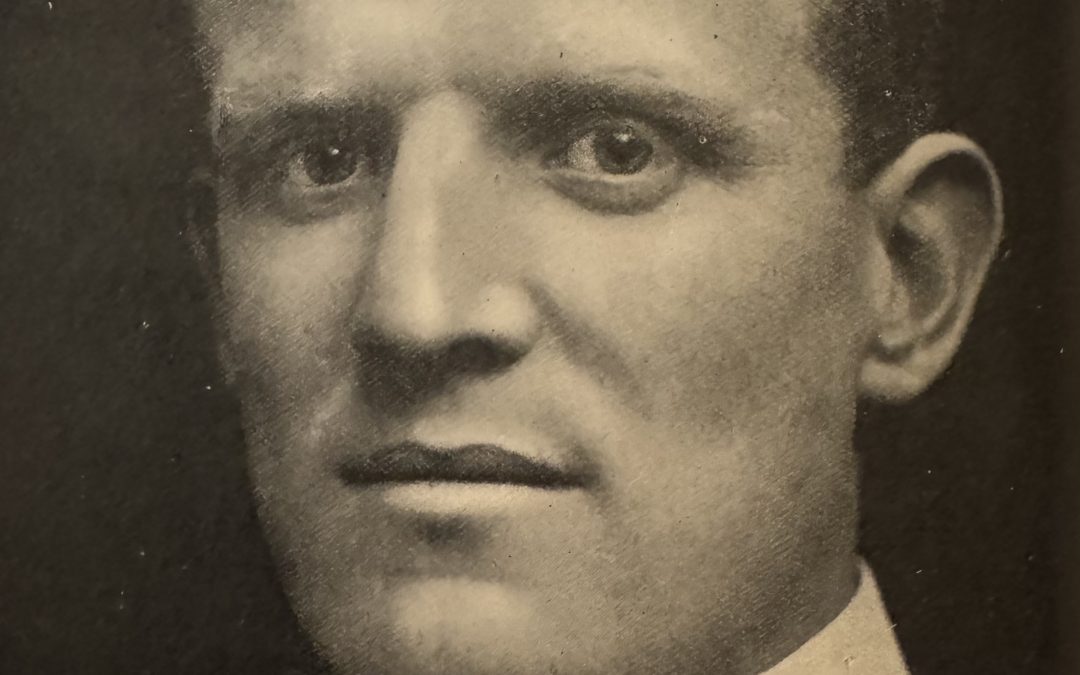JOHN TAIT ‘JACKY’ ROBERTSON
BY Vince Cooper
CHELSEA’S managerial hot-seat has become known for being notoriously difficult to fill. Whether because of a falling-out with the board (regardless of how popular they might have been with fans) or due to poor results it seems it’s never been a comfortable seat in SW6. This has been something that has become ever-more prevalent under the last two owners when the metaphorical revolving-door has been utilised to the full
But imagine taking over when there isn’t even a team, when you are the first signing and when you’ve got to build from scratch. That was the situation the 28-year-old John Tait (Jacky) Robertson found himself in when he joined the club.
Although he didn’t last long in the role, leaving after a season for a reason that has been somewhat lost in the mists of time Robertson did a fine job of creating a base from which Chelsea quickly earned a place among football’s elite.
Robertson signed for the Blues in May 1905 taking up the post of player-manager. He then helped to build the first-ever Chelsea team, played in the first-ever match and guided them through an arduous first season before leaving in November 1906 and being replaced by board member Bill Lewis who saw the Blues to their first promotion before handing over himself to another Scot in David Calderhead who would bring stability to the position and spend 26 years at the helm.
Robertson was born in the renowned Scottish football hotbed of Dumbarton in 1877. A left-half known for passing ability and hard-tackling his first club was Artisan Thistle in his home town before moving up in grade and joining Greenock Morton. From there he journeyed south, signing for Everton. It was whilst at Goodison Park he received his first call-up for the Scottish national team after appearing for the ‘Anglo Scots’ in a trial match. He made his national team debut in a 3-1 home defeat to England.
After a couple of seasons on Merseyside he ventured further south joining Southampton and immediately winning the Southern League title whilst also reaching the FA Cup quarter-final with his new team. He also collected his second international cap.
After a solitary season on the south coast Robertson was on the move again, lured back to his homeland to join Glasgow Rangers who handed over the hefty – at the time – sum of £300 for his services.
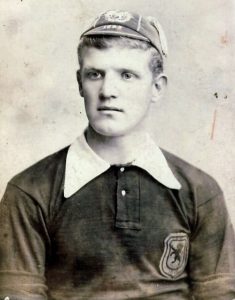 T
T
On international duty
After scoring on his debut for his new club in a 6-2 win over Clyde, Robertson went on to play 162 times for the Gers winning three Scottish titles. He also became a regular for his country winning another 14 caps including five as captain and leading them to Home International Championship victory in 1900, clinched with a 4-1 win over England.
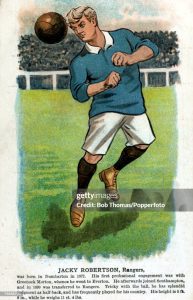
Robertson of Rangers
During his time with the Glasgow giants he became known as the ‘Handy Man’ of the team due to his versatility and ability to fill virtually any outfield role, and he was awarded a benefit match by the club in 1904.
During his final season at Rangers he agreed to return to England to manage newly-formed Chelsea and he spent part of that last year north of the border scouting and recruiting players for his new club. In May 1905 it was back to England where, after some vigorous campaigning Chelsea were granted entry into the 2nd Division with Robertson given the Herculean task of assembling a team from scratch.
In 1894 the Mears brothers, Gus and Joe, had taken a lease on the Stamford Bridge Grounds, opened in 1877 and home of the London Athletic Club, with the intention of putting on football matches. However their efforts were held up by the initial owner, a Mr Stunt who had a deal with the Athletic Club which stated that their use of the stadium would remain until two years after his death at which time the brothers would have an option to buy the freehold.
Mr Stunt passed away in 1902 and in 1904 the Mears brothers bought the property having already purchased some adjoining land (formerly a market garden). Fulham were offered (and turned down) the opportunity to move into the ground for a rent of £1,500 per year, preferring to stick with Craven Cottage. If they had said ‘yes’ there would never have been a Chelsea! The siblings then rejected an approach from the Great Western Railway who wanted to turn it into a goods yard and instead set about building up the stadium after deciding to start their own football club.
Frederick Parker was the man entrusted with the tough task of gaining league status for the club. They had initially approached the Southern League but after objections from Fulham and Tottenham the potential move was turned down so, in an unprecedented decision they looked up instead of down and went for immediate Football League status.
Renowned Scottish football architect Archibald Leitch was brought in to design the new east stand which was described by one journalist of the time as ‘like a fabulous ocean liner running the whole length of the pitch. Meanwhile, Messrs Robertson and Parker set out on a journey around the country with the joint aim of canvassing for votes for the club’s inclusion into the league and recruiting top class players who could, it was hoped, immediately challenge for promotion to the top flight.
Before things could get started there was the little matter or naming the club. At the first meeting of the directors it was debated at length. With Fulham F.C. (the borough being home of the club) obviously taken, they had to look away from the simplest option and most of those present favoured Stamford Bridge F.C. However, Parker explained that letters sent to that address often ended up in Yorkshire at the ‘other’ Stamford Bridge. Kensington F. C. and London F. C. were also considered but it was eventually decided that ‘Come on Chelsea!’ would be the best rallying cry. So the decision was made and Chelsea F.C officially came into being on 14th March 1905.
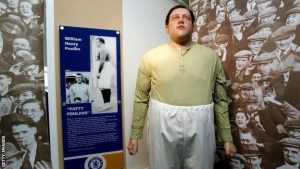
Willie Foulke as featured in the Chelsea museum
One of the club’s first captures was ‘The Colossus’ Willie Foulke, a larger-than-life England international goalkeeper signed from Sheffield United for £20. Robertson made him captain and said of him: “As a draw alone Foulke is worth his weight in gold and he is also one of the best goalkeepers in the league”.
Robertson was forced to leave halfway through the round-Britain trip as he was required by Glasgow Rangers for whom he was still playing regularly but Parker pressed on, adding players and building up votes.
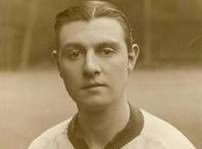
Jimmy Windridge. The first Chelsea great
Chelsea spent £340 of the £360 they splashed out before the season started on three players from Small Heath. Jimmy Windridge a future England international and perhaps the first Chelsea great, and two Scots James Robertson (no relation) and Bob McRoberts. The trio were signed with the deals being dependent on league status being granted (thereby giving Small Heath a massive incentive to vote for the Londoners and encourage others to do the same, an excellent political move by the astute Parker.
The new club’s efforts to bring in players were no doubt helped by the fact that Robertson was still playing. A number of Chelsea’s new arrivals had either played with or against him, or at least knew of his reputation as a fine footballer.
Next came the all-important battle for league status and Parker’s round-England trip to impress clubs and collect votes proved worthwhile when the new team were elected to the Football League at the annual general meeting at the Tavistock Hotel, Covent Garden on 29 May 1904.
The decision to allow Chelsea into the league wasn’t straight forward with many Northern clubs stating the long and expensive journeys they would need to undertake as a negative. Six spots were up for grabs after the League decided to expand both divisions from 18 to 20 clubs and the pair that had finished in the bottom two, Burton United and Doncaster Rovers, had to apply for re-election.
Each of the contenders was given the opportunity to state their case and Parker eloquently put forward his team’s appeal, negating the major concern by offering Midland clubs £15 and Northern clubs £20 towards their travel expenses for the next three years.
it was Leeds City who garnered most votes, receiving 25 whilst Burslem Port Vale finished second with 21 with Chelsea managing 20 votes and third place. A second vote took place after the initial three were elected with Stockport County, a re-elected Burton United and Clapton Orient all making it into the league whilst Doncaster Rovers missed out.
The league at the time was almost exclusively Northern and Midland dominated (Woolwich Arsenal were the only Southern team in the two divisions), and clubs, whilst mindful of travel expenses were clearly looking to increase the national scope of the competition. Much to the annoyance of Fulham and Tottenham who were now keen to move up from the Southern League, the Blues were granted a place in the 2nd Division with their two rivals forced to wait two and three years respectively.
A number of Robertson’s other early signings, most of whom were signed on the proviso that the club would secure League status, were players from his homeland. Martin Moran, the wonderfully nicknamed ‘Muscular Midget’ was signed from Hearts along with Bob Mackie, Robert McEwan and George Key whilst Tommy Miller arrived from Falkirk.
Another Scot to join was David Copeland, originally from Ayr, who was signed from Spurs along with Irish international winger John Kirwan who, like Foulke, had played against his new manager in the Home Internationals. Copeland was named captain for the Blues’ second season after Foulke had been sold but he broke his leg six games into it and was forced to retire.
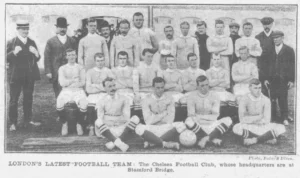
New Kids On The Block. Chelsea 1904-05
These were the headliners among a total of 28 signings made (16 of them from north of the border) before the big kick-off but Robertson revealed that he turned down others. He received a number of letters from potential players offering their services including one who claimed he was ‘a first-class centre-forward’ but if that position wasn’t available he was ‘a reliable turnstile man’ whilst another said he would be happy to ‘referee, keep goal or mind the coats’.
So, on 2 September 1905 the club trotted out at Edgeley Park for the first-ever league match against Stockport County. With a record crowd of 7,000 in attendance the newcomers fell to a 1-0 defeat.
Chelsea had their chances early, the best created by the ‘Muscular Midget’ Moran whose long-range shot brought out a fine save from home ‘keeper Pemble. Soon after, Stockport right-winger Schofield dribbled into the penalty area and was tripped heading for goal with the ref awarding a penalty. Schofield himself took the spot kick but Foulke got his fists to the effort and knocked it down.unfortunately for the visitors County left-wing Bardsley was first to the loose ball and he set up George Dodd for a simple tap-in to score the only goal of the match.
A week later the Blues were on the road again, this time travelling to Blackpool where play was in doubt right up to kick off with much of the pitch waterlogged. It worked in Chelsea’s favour early on when a skidding shot seemed sure to be heading goalwards until a huge puddle on the goal line brought the ball to a halt allowing Foulke to lumber across and whack it clear.
Deep into the second half and with the game appearing to be heading towards a goalless draw a long-range shot from player-manager Robertson flew into the net to give Chelsea their first-ever league win. So the Scot now had the honour of not only being the club’s first-ever manager, he will also remain in the record books forever as the first-ever goal scorer.
Just 48 hours later it was time for the first-ever league match at Stamford Bridge and with more than 8,000 in attendance a hat-trick from Jimmy Windridge and a brace by David Copeland saw Chelsea thrash Hull City 5-1.
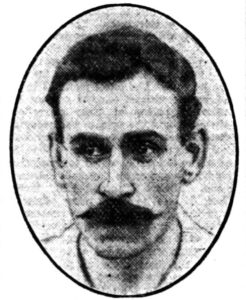
Bob McRoberts. Scored the winner against West Brom.
No official crowd number was released for the first Saturday home match, against West Bromwich Albion but an estimate given by the club as 20,000 was described as ‘very moderate’ by the Athletic News who clearly suspected that there were a good few more. Those in attendance saw Bob McRoberts score the only goal to win it for Chelsea.
The club, with their attacking style and personality players were soon attracting bigger and bigger crowds to Stamford Bridge and the figure reached 67,000 for the Easter clash with fellow promotion contenders Manchester United who would finish the season as runners-up, one place above Robertson’s men. The match finished all square at one apiece.
in the F. A. Cup Chelsea sailed through the first two preliminary rounds, seeing off the 1st Grenadiers and Southern United. Unfortunately they were forced to play their 3rd preliminary round match on the same day as a league fixture against Burnley. Whilst the first team were recording a single-goal league victory at Stamford Bridge, Robertson sent a reserve team to face Crystal Palace and they were hammered 7-1.
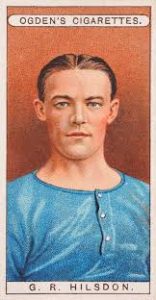
George Hilsdon. ‘He’ll make a champion centre-forward, ye mark my words’
After Chelsea missed out on promotion in their debut season with that 3rd-place finish despite scoring a league-leading 90 goals, Robertson started to prepare for the second campaign. He sold Foulke to Bradford City and replaced him with Robert ‘Pom Pom’ Whiting (the nickname came from his ability to kick the ball prodigious distances) and also made the astute capture of George ‘Gatling Gun’ Hilsdon from West Ham, one which would have a major impact on the Blues’ next few seasons.
The signing of Hilsdon was a prime example of the manager’s canny eye for a player. The Blues had been alerted to the talents of a West Ham half-back and Robertson, along with Parker, went to see the Hammers’ reserve team play at Fulham.
After watching the first half Robertson turned to Parker and said; “Never heed yon half, just watch that inside-left. He’ll make a champion centre-forward, ye mark my words”.
The Blues began Robertson’s second season with a 9-2 thrashing of Glossop North End with five goals from Hilsdon who had been signed on a free transfer, would finish the season with 27 goals in 32 games and would be immortalised as the player on the weather vane that now sits proudly on top on the ‘new’ East Stand having spent many years on top of the old one.
But the relationship between the Chelsea board and Robertson quickly deteriorated. The manager failed to show up for a board meeting and it was announced that the first team would, in future ‘be chosen by the board with the assistance of the manager”.
In November with the club on a three-game winning streak and third in the table, the player-manager offered his resignation which was duly accepted and he was gone. Although neither club nor player made an official announcement regarding his departure it was generally reported that it was due to ‘internal friction’ and differences in opinion between the directors and the manager over the method of team selection.
There was clearly a level of indiscipline among the Chelsea players at the time. Skipper Copeland was reported to have turned up for another board meeting ‘in a clear state of intoxication’ and was suspended until the club received an apology. The club had a number of similar problems and it wasn’t until England amateur star and noted Corinthian Vivian Woodward joined and brought about a change of attitude that their reputation as a team of ‘problem players’ started to be erased.
Although there was early talk that he might move to Tottenham and then rumours that he was going to join Middlesbrough, Robertson, who also had his request for a free transfer granted, next surfaced at the same Glossop club Chelsea had thrashed on the opening day of the season. He signed for the club who were funded by Samuel Hill-Wood later chairman of Arsenal, despite agreeing not to join another 2nd Division team when departing Stamford Bridge.
He was player-manager of the Lincolnshire club for two years before joining Manchester United as reserve team coach and he would later spend time in Hungary managing MTK Budapest where he educated his players in the short-passing style and created a team that became one of the major forces in the fast-growing European game.
Sadly his time in Hungary seems to have ended similarly to that in West London as he was asked to leave the club after reportedly ‘neglecting his job’.
He eventually moved back to Scotland, working in the dockyards among a number of menial jobs before carving out a new and successful role in sports journalism. He succumbed to cancer in 1935 aged 57, passing away in Milton, a suburb of Glasgow.
Jacky Robertson played a huge role in the creation of the original Chelsea team and is therefore a major figure in the club’s history. His recruitment of many Scots was to become a key factor in the building of Blues’ teams for many years to come. It’s a long and star-studded road from Jacky Robertson to Pat Nevin!

